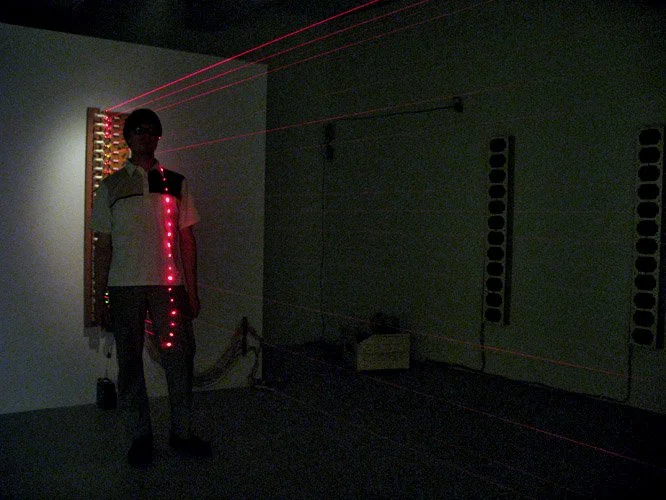Diyan Achjadi // See Girl
Diyan Achjadi’s See Girl was part of a series of digitally-generated drawings and prints that incorporated historically feminine handicrafts such as embroidery, crochet and sewing. Achjadi’s imagery of landscapes fraught with peril were inspired by the graphic, seemingly benign style of representations in survival guides, airplane precautionary pamphlets and warning labels. These backdrops were inhabited by the recurring image of a single protagonist: a young girl in a pink dress (perhaps the artist?). Far from innocent, the girl is equipped with the necessary military hardware, and looked poised and resourceful. Achjadi’s juxtapositions created an ambiguous narrative that addresses present day alarmist politics and envisioned female post-apocalyptic proto-pop-culture
Diyan Achjadi (they/she) is a Vancouver-based artist who explores the ways that surface ornamentation and illustrated printed matter can function as archives documenting the circulation of ideas in visual form. Born in Jakarta, Indonesia, their formative years were spent moving between multiple educational, political, and cultural systems. Through drawing, printmaking, and animation, they use modes of fiction and storytelling to examine interrelated and conflicting histories of place.
Diyan received a BFA from the Cooper Union (New York, NY) and an MFA from Concordia University (Montreal, QC). She has exhibited widely at galleries and film festivals across Canada and beyond. Recent exhibitions include Stories for Futures, Real and Imagined (2024); Godzilla: Echoes from the 1990s Asian American Arts Network (2024); “Between Line and Thread: Connecting the Asian American Arts Centre Collection”(2023); Carried Through The Water (2022); Whose Stories? (2021).
Public art projects include Hush, an animation commissioned by Emily Carr University for the City of Vancouver Public Art Program (2021); NonSerie (In Commute), part of How far do you travel?, a year-long exhibition on the exterior of public buses, commissioned by the Contemporary Art Gallery (CAG) in partnership with Translink BC (2019); and Coming Soon!, a monthly series of prints installed at sites slated for construction and development, commissioned by the City of Vancouver Public Art Program, documented with a book-length publication in 2020. In 2021, Diyan was a recipient of the VIVA Award from the Jack and Doris Shadbolt Foundation
Diyan is a Professor in the Audain Faculty of Art and currently serving as Interim Vice-President Academic at Emily Carr University of Art and Design
To learn more about Diyan and their current work, visit their website.











